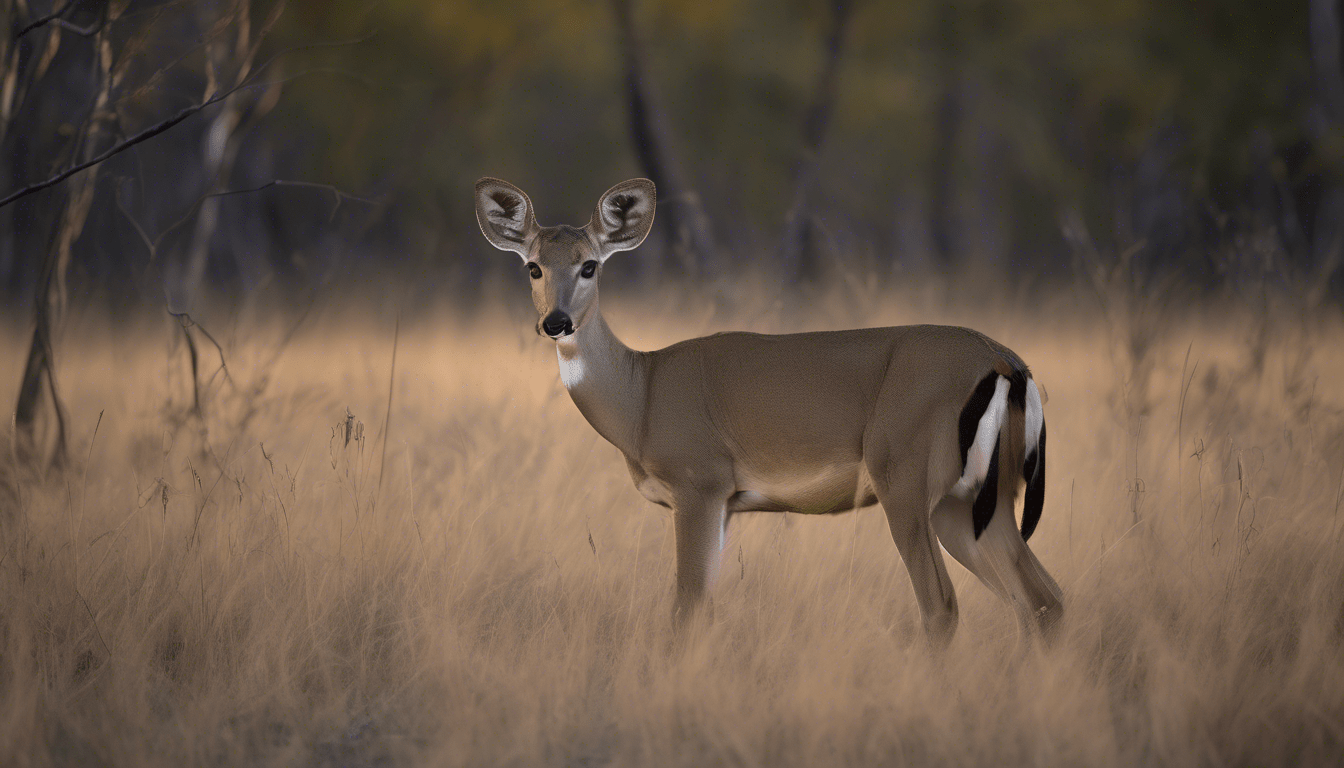Monitoring nocturnal wildlife demands more than just luck; it requires the right camera tailored for low-light environments. Night vision and imaging tech have evolved significantly, offering sharper images and greater detection ranges. This guide explores the technical features that truly matter, helping you choose a camera that balances quality, durability, and cost—so you can observe nature’s secrets without disturbing their nighttime rhythms.
Understanding Nighttime Wildlife Camera Features
When selecting a wildlife camera for nighttime use, night vision & imaging technology is essential. Most cameras rely on infrared (IR) night vision sensors to capture images without disturbing animals. These sensors emit IR light, which is invisible to wildlife but allows the camera to record clear footage in complete darkness. The effectiveness of these sensors depends on their sensitivity and ability to minimize light reflection, ensuring crisp images without overexposure.
In parallel : Transforming agriculture: the impact of drone surveillance on reducing pesticide use in precision farming
The detection range and illumination distance are critical factors for successful wildlife monitoring at night. Detection range refers to how far the camera can sense movement or heat signatures, triggering image capture. Illumination distance indicates how far the IR light can reach, affecting the visibility of objects in the frame. Cameras with longer detection and illumination ranges enable you to observe animals from a better vantage point, reducing the risk of disturbing their natural behavior.
Image and video quality in low-light conditions depends on both the sensor and lens capabilities. High-resolution sensors improve detail and clarity, while advanced image processing reduces noise common in dark environments. Some cameras offer options to switch between color and black-and-white night vision, enhancing adaptability to various settings.
Also to read : Transforming early disease detection: how graphene-enhanced sensors are leading the charge
Overall, understanding these key features related to night vision & imaging technology allows you to choose a wildlife camera that delivers reliable, high-quality footage even in the darkest conditions. Quick access here can help you explore more detailed specifications and options tailored to your needs.
Types of Wildlife Cameras Suitable for Night Use
When selecting camera types for nighttime monitoring, understanding the distinctions between infrared (IR), black flash, no-glow IR, low-glow, and white flash cameras is crucial. Each camera type offers unique features tailored to nocturnal observation.
Infrared (IR) cameras are widely used for night wildlife monitoring because they emit infrared light to capture images without disturbing animals. They operate by using IR LEDs that illuminate the scene invisibly to most wildlife. However, standard IR cameras can produce a faint red glow, which might alert sensitive species.
Black flash and no-glow IR cameras take this further by eliminating visible light emissions during operation. Black flash cameras use LEDs with wavelengths beyond the visible spectrum, rendering them completely invisible to animals and humans alike. This makes them ideal for observing shy or nocturnal animals without causing disturbance. No-glow IR cameras overlap with this category, utilizing similar technology to remain undetectable in darkness.
Low-glow IR cameras emit a very faint red glow, striking a balance between illumination strength and stealth. While they are less conspicuous than standard IR cameras, some animals may still detect the subtle glow, which can affect natural behavior.
White flash cameras, by contrast, use a bright white LED flash to illuminate the scene. They produce clearer, full-color images at night, which can be advantageous for species identification or capturing colorful nocturnal scenes. The downside is the visible flash can startle animals, potentially deterring them from the area or altering their behavior.
Choosing between these options depends on observation goals: for stealthy, undisturbed monitoring, black flash or no-glow IR cameras are optimal; for clearer image quality at night, white flash cameras may be preferred despite the risk of flashing disturbance. Low-glow IR cameras serve as a middle ground but may not fully avoid wildlife noticing the illumination.
For detailed specifications or purchasing advice on camera types for nighttime monitoring, Quick access here.
Critical Specifications for Night Wildlife Cameras
Selecting the right night camera specifications is crucial when aiming to capture clear, detailed nocturnal wildlife footage. Understanding key features such as IR range, battery life, and storage capacity ensures your camera performs optimally in varied environments.
The IR range determines how far your camera’s infrared LEDs can illuminate the scene without startling animals. For dense forests or wide-open plains, you’ll want a longer IR range to monitor animals from a distance. Cameras with adjustable IR sensitivity allow you to tailor the illumination depending on terrain and target species, preventing overexposed or underexposed images.
Battery life is another vital aspect. Extended night use demands power options that last through long observation periods. Many cameras offer rechargeable batteries or support external power sources, enabling days or even weeks of continuous monitoring. This reduces interruptions and minimizes the need for frequent battery replacements, essential for remote locations.
Storage capacity and video resolution directly impact how much footage you can save and the quality of night recordings. Higher resolution delivers sharper images, but requires more memory. Look for cameras supporting large-capacity SD cards or cloud storage options to avoid missing moments due to full memory. Balancing resolution and storage ensures you capture detailed nocturnal behavior without sacrificing recording duration.
By focusing on these night camera specifications—precise IR range, robust power solutions, and ample storage with high resolution—you empower your wildlife monitoring efforts, capturing invaluable nocturnal activities effectively. For those seeking quick access here to recommended models fitting these criteria, check trusted wildlife tech resources.
Tips for Installing and Maintaining Night Cameras
Proper camera placement is crucial to ensure optimal night vision coverage. Position night cameras where they can capture the widest possible field without obstructions like trees or walls. Placing the camera at a height of 8 to 10 feet often balances the view angle and reduces vandalism risk. Also, avoid facing cameras directly towards bright light sources, such as street lamps or car headlights, as glare can reduce image quality during nighttime.
Weatherproofing is another key factor for reliable night vision. Cameras should have a solid weatherproof casing rated at least IP65 to withstand rain, dust, and snow. Protecting cables and connectors from moisture also prevents signal loss and damage. Metal housings with protective coatings enhance durability in extreme temperatures and harsh outdoor conditions.
Routine maintenance guarantees consistent nighttime operation. Regularly clean the camera lens to prevent dust or water spots that may impair image clarity in low light. Inspect wiring and mounts quarterly for wear or looseness, especially after storms. Updating firmware ensures the cameras maintain compatibility with night vision software advancements.
By adhering to these placement, weatherproofing, and maintenance tips, night cameras will provide clear, reliable footage around the clock. For a detailed guide, Quick access here.
Comparing Top Nighttime Wildlife Cameras
When evaluating wildlife camera reviews with a focus on night capabilities, several models consistently stand out for their reliable performance. The key to selecting an effective night wildlife camera lies in its infrared illumination quality, trigger speed, and image clarity in low-light conditions.
Leading models utilize different technologies to enhance nocturnal monitoring. Some cameras employ no-glow infrared LEDs that allow for stealthy operation without disturbing animals. Others use a combination of low-glow LEDs and advanced sensors to provide sharper images in very dark environments. Wildlife camera reviews often highlight the trade-offs between these technologies: no-glow cameras are excellent for avoiding animal alertness but might offer slightly grainier images, whereas low-glow models may emit a faint red light but capture clearer shots.
Performance varies with environmental factors. Cameras tested under various nocturnal conditions demonstrate differing abilities to handle moisture, temperature fluctuations, and dense foliage. For instance, some models maintain high trigger speeds even in colder temperatures, ensuring moving wildlife is captured reliably despite the slower pace of many nocturnal animals.
Cost-benefit analyses from user feedback reveal that mid-range wildlife cameras often deliver the best balance of night vision capability and affordability. While premium models may offer enhanced image resolution and faster response times, budget options provide sufficient quality for amateur wildlife observation without excessive expense. Considering these factors is essential for both hobbyists and researchers aiming to maximize their investment.
For a detailed breakdown of the top night wildlife cameras and their specific attributes, access the full comparison with comprehensive insights here: Quick access here.
Best Practices for Nighttime Wildlife Monitoring
Monitoring wildlife at night requires careful planning to maximize camera effectiveness during the night while minimizing disturbance to animals. One key wildlife observation tip is to use infrared or low-glow LEDs on trail cameras, which allow for clear nocturnal footage without startling creatures. Position cameras along known wildlife paths or watering holes to increase the chance of capturing activity, and ensure they are securely mounted and angled to avoid false triggers.
Ethical considerations are equally important. To minimize disturbance, avoid frequent visits that might disrupt animal behavior, and select equipment that emits the least noise or light. Respecting natural habitats during observation reduces the risk of influencing wildlife patterns.
For managing the often vast amount of footage collected, establishing a robust data management system is essential. Organize files systematically by date and location, and use software tools designed for analyzing nocturnal footage. These tools can help identify species, track movement patterns, and even generate behavior reports efficiently.
By following these wildlife observation tips—leveraging technology thoughtfully, respecting ethical guidelines, and managing data effectively—you enhance both the quality and integrity of nighttime wildlife monitoring. For detailed insights, Quick access here.
Frequently Asked Questions About Night Wildlife Cameras
Night wildlife cameras often raise questions regarding their performance in low-light conditions. One of the most common issues users face is poor image quality during night operation. This is frequently caused by insufficient infrared (IR) illumination or improper placement of the camera. IR LEDs emit invisible light to capture clear images without disturbing animals. However, if IR illumination is too weak or uneven, the resulting images may appear blurry or grainy.
Troubleshooting IR problems begins by checking the IR sensor and ensuring it is not obstructed. Dirt, spider webs, or foliage can reduce IR effectiveness. Adjusting the angle of the camera to avoid reflective surfaces can also minimize glare in night shots. Additionally, some cameras feature adjustable IR intensity settings, allowing users to customize illumination based on distance and terrain.
Selecting the right night wildlife camera depends heavily on the type of wildlife you wish to observe and the specific environment. For dense forests, cameras with strong IR range and wide-angle lenses are ideal. In open areas or terrains with long sightlines, models with extended IR range and high-resolution sensors produce better results. Cameras that support multiple IR modes give flexibility for different terrains and target species.
Understanding these aspects helps users optimize their equipment to capture clear, detailed nighttime images. For more detailed guidance on camera selection and troubleshooting tips, Quick access here.
Final Considerations Before Purchase
When approaching a buying guide for night cameras, it is crucial to balance features with your budget. High-end models might offer advanced infrared capabilities and wide-angle viewing, but these often come at a premium. Assess which features are essential for your specific needs to avoid overspending while still securing effective night surveillance.
Compatibility with your existing monitoring systems cannot be overlooked. A night camera must integrate smoothly to provide seamless live feeds and recordings. Before finalizing your choice, verify if the camera supports your current setup, whether it’s a DVR, NVR, or a cloud-based system. This ensures hassle-free installation and reliable performance.
Equally important is understanding the warranty and after-sales support policies that accompany your night camera. A robust warranty period and responsive customer service can save you time and money in the event of hardware malfunctions or technical issues. Check the manufacturer’s support track record and read customer reviews to gauge reliability.
By carefully weighing these factors—budget, compatibility, and support—you can confidently select a night camera that suits your monitoring needs while offering peace of mind. For convenience, here is Quick access here.




